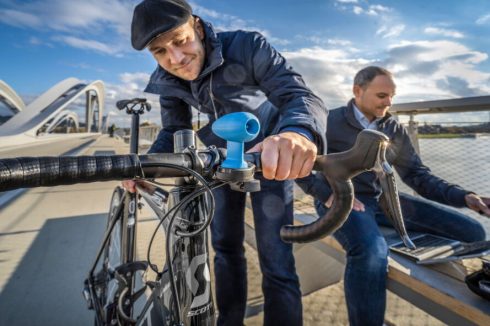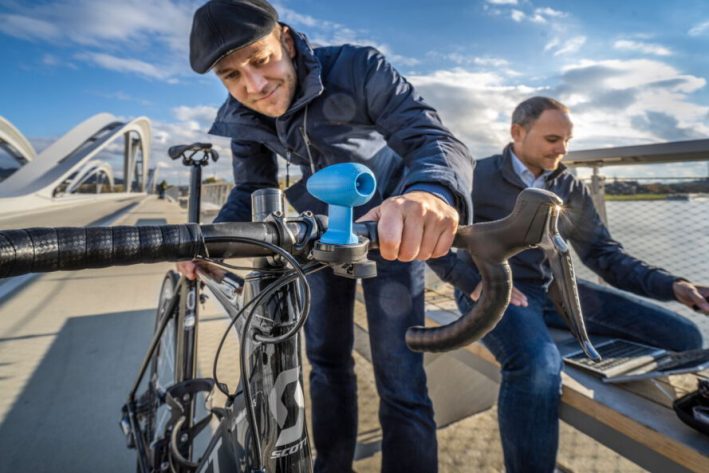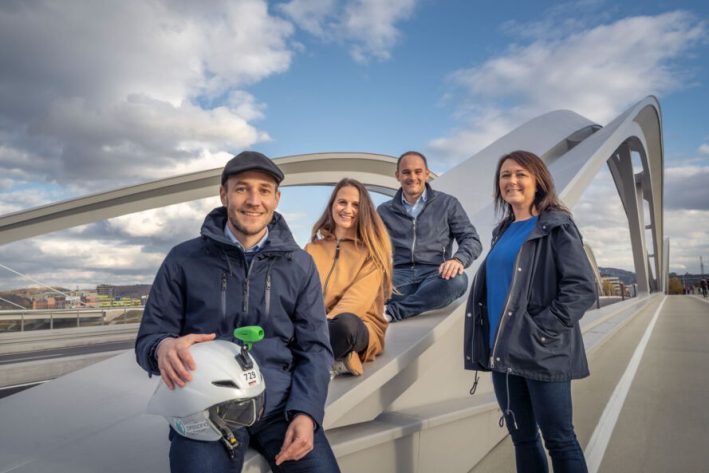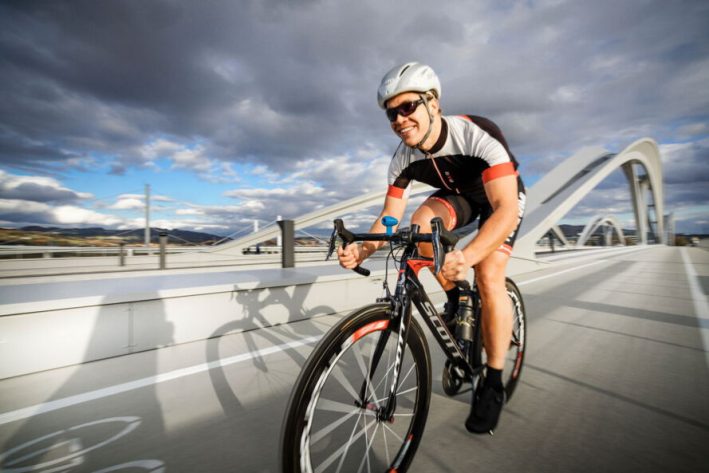Thanks to professional wind measurement of unprecedented quality, Christoph Feichtinger and Philipp Kitzmüller are transforming the wind from a disruptive factor into a predictable influencing factor for athletes, developers and the energy industry.
The wind brings the weather, moves the seas, the clouds and the air and everything that grows on land. It drives boats, mills and power stations. Breaks, destroys and devastates. And it has fascinated mankind for as long as it has existed. Indigenous peoples regard it as the breath of the world, and even in our latitudes the wind symbolizes the incessant change that lies in the fleeting nature of all existence. For decades, the notorious unpredictability of the wind has also kept engineers, designers and scientists from a wide range of disciplines on their toes. On the other hand, it has also kept ambitious athletes on their toes, who have to watch more or less helplessly as the wind distorts their performance in the saddle of a racing bike, on the running track or in ski jumping. Surprisingly, however, the immense importance of wind in the most diverse dimensions is by no means reflected in correspondingly sophisticated measurement technology.
Trumpeting buddies
"By default, wind is measured at a height of ten meters, but rarely at the point that really matters," says Christoph Feichtinger, who has decided to change exactly that. With a sensor and the start-up Windpuls, which he founded with his buddy Philipp Kitzmüller and their two partners Elke Anzenbacher and Maria Dieplinger in Linz on May 4, 2021. Under conditions that are quite unusual even in the colorful world of start-ups: Coming from Schildorn and Pramet in the Innviertel region, Kitzmüller and Feichtinger have been close friends since they met in trumpet lessons when they were ten years old. That was almost 30 years ago.
The winner of the eco-caratahon
They never lost sight of each other, even though they kept going their separate ways: Feichtinger went to Graz, where he studied mechanical engineering and became an industrial engineer with a focus on energy and environmental technology. While still a student, he helped build Austria's most energy-efficient hydrogen-powered vehicle at the time. It won the Shell Eco Marathon 2010 by achieving a mileage of 1,700 km from the equivalent of 1 liter of petrol. Feichtinger then worked for five years as a project manager at AVL qpunkt in Graz. Among other things, he worked on cooling simulations and cooling circuit developments for customers such as Porsche and Audi before moving to KTM for another five years. There, he built up the aerodynamics department for road racing before finally becoming Technical Director of the Digitrans innovation laboratory in Linz in 2019, which works on automated and autonomous mobility.
A Corporate Life
Meanwhile, his friend Philipp Kitzmüller made a career in corporate life: after studying business informatics at Kepler University, he became an account manager in the insurance business at Raiffeisen, which he left in 2013 for a job as Risk & Insurance Manager at Lenzing AG. After a one-and-a-half-year interlude as Key Account and Sales Manager at the Austrian branch of the US Marsh Group, he returned to Risk Management at Lenzing in 2015 and moved within the Group in 2019, where he has been responsible for global indirect purchasing ever since. He did not fail to notice that his best friend had been working almost fanatically over the years to turn the unpredictable disruptive factor of wind into a measurable and therefore usable influencing factor for mobility and racing.
Defiance as the driving force
As Feichtinger freely admits, the driving force behind the development of mobile wind measurement technology was often pure anger in the engineer's belly: at the fact that all computer simulations and tests in the wind tunnel proved to be unusable on the open road. And about the fact that his superiors more than once opted for a suboptimal component variant. Based on random performance data, Feichtinger knew that the wind had had a secret but decisive hand in the test runs on the test track. However, this could not be proven due to a lack of reliable wind data.




 Image: tech2b / Andreas Balon
Image: tech2b / Andreas Balon
 Image: tech2b / Andreas Balon
Image: tech2b / Andreas Balon
 Photos: tech2b / Andreas Balon
Photos: tech2b / Andreas Balon





